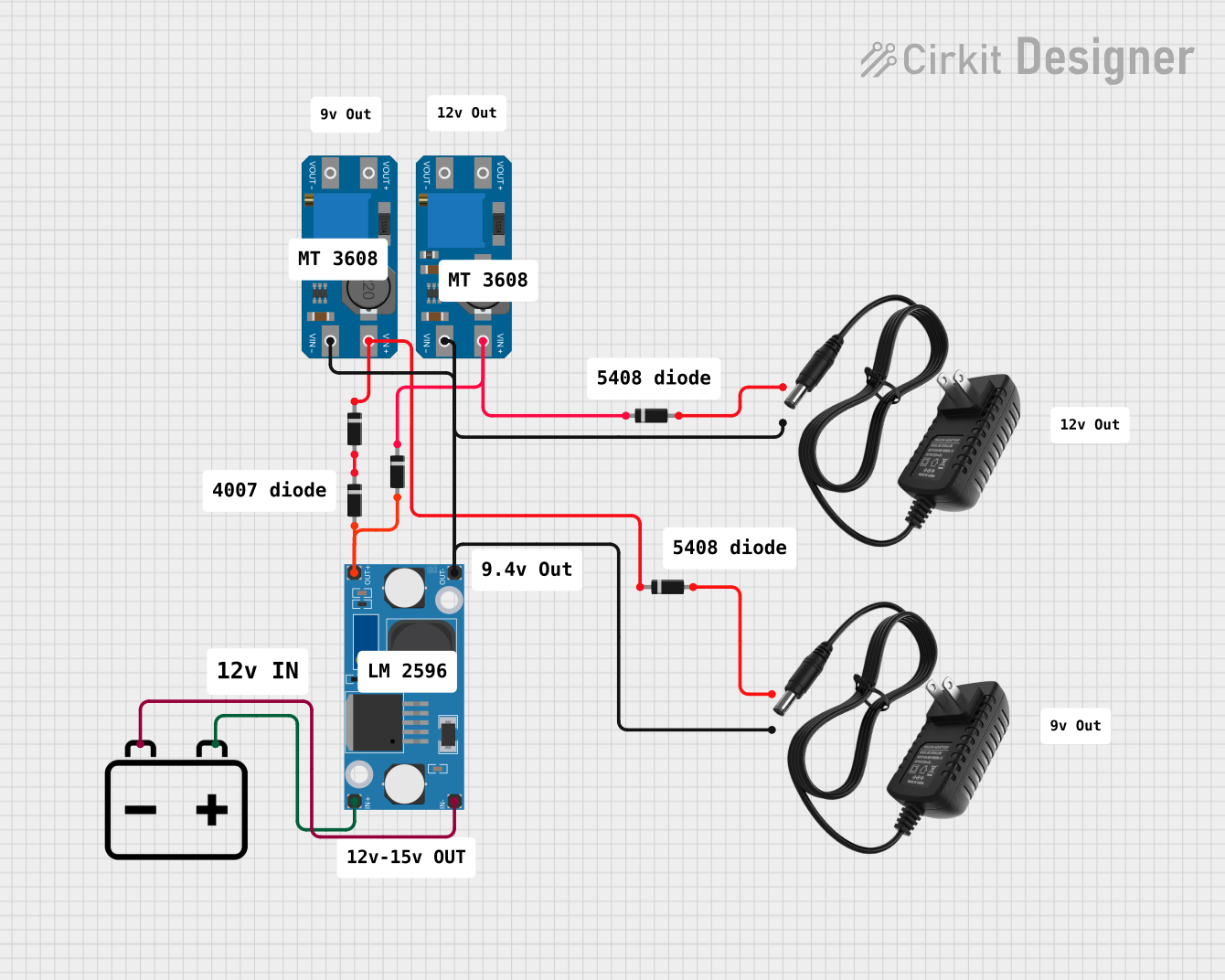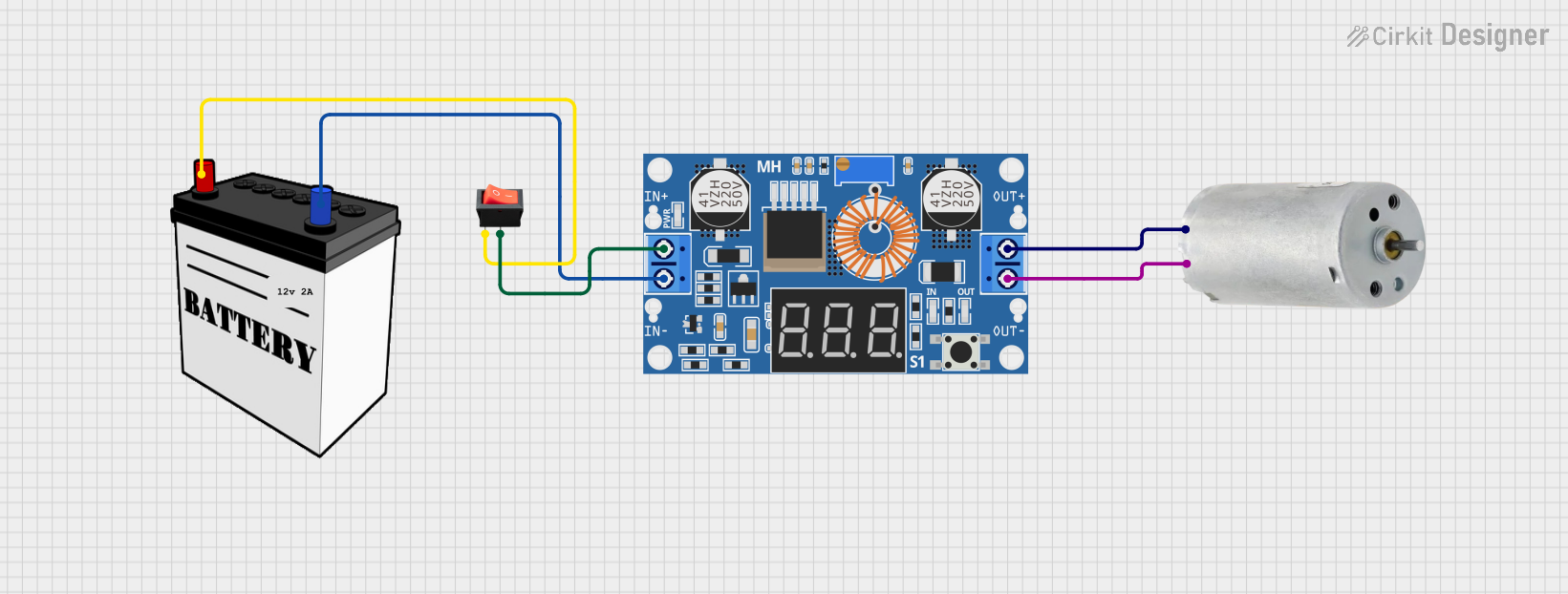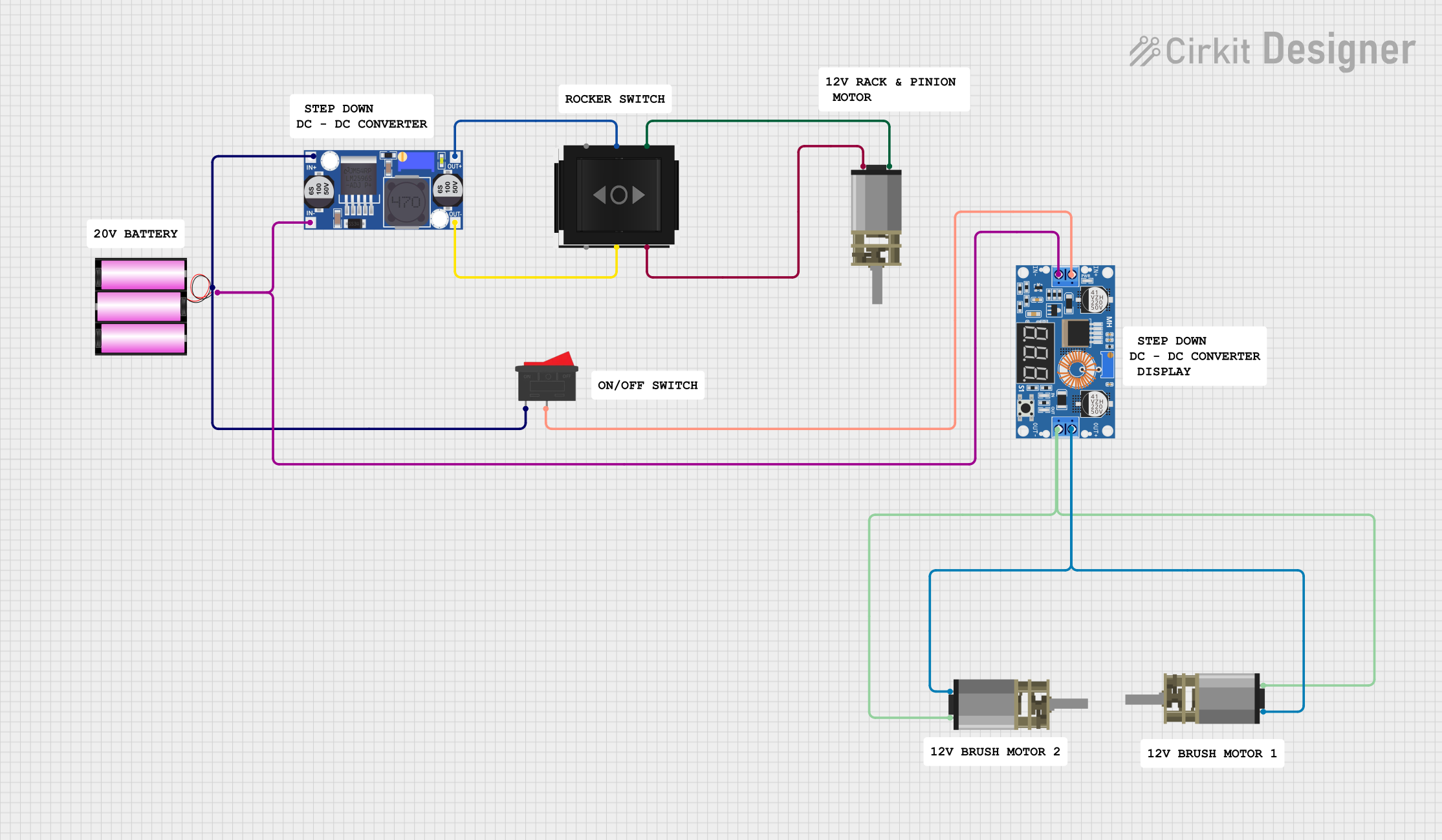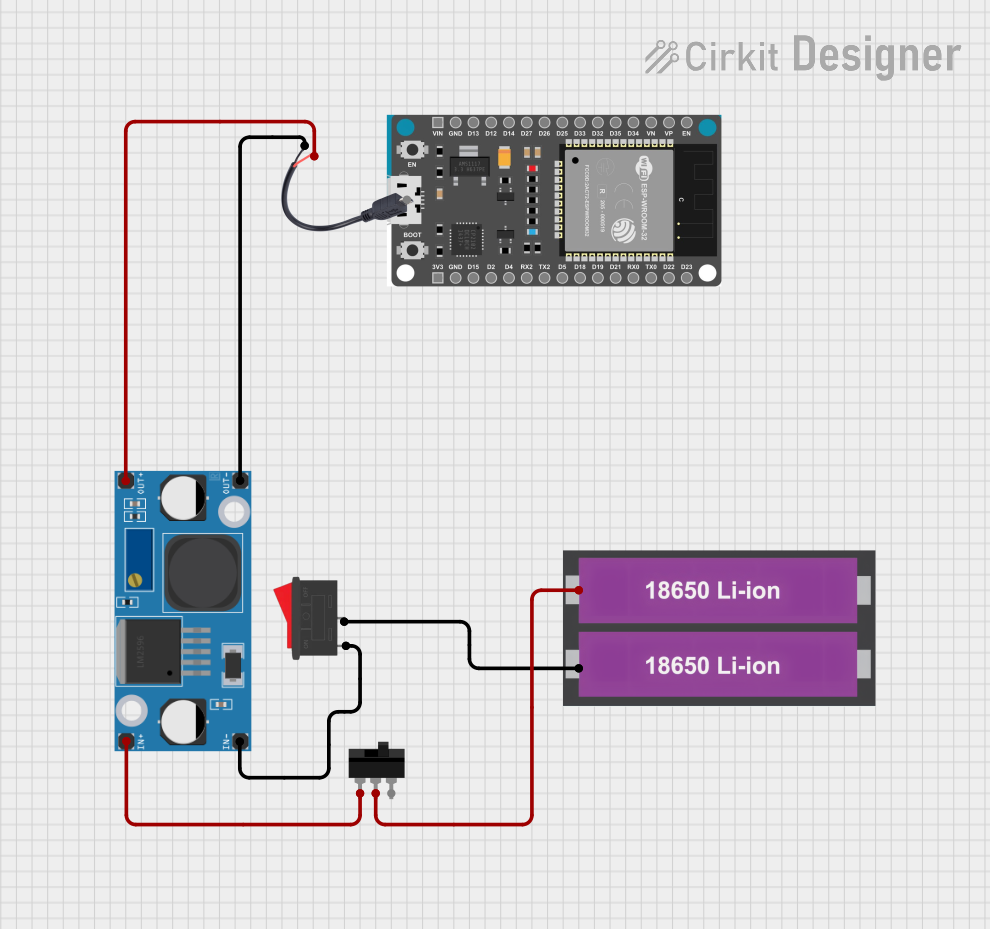
How to Use lm2596 Step-Down Buck DC/DC: Examples, Pinouts, and Specs

 Design with lm2596 Step-Down Buck DC/DC in Cirkit Designer
Design with lm2596 Step-Down Buck DC/DC in Cirkit DesignerIntroduction
The LM2596 is a high-efficiency step-down (buck) DC/DC voltage regulator designed to convert a higher DC input voltage into a stable, lower DC output voltage. Manufactured by CN China, this component is widely used in applications requiring efficient power conversion with minimal heat generation. Its compact design and integrated features make it ideal for powering microcontrollers, sensors, and other low-voltage devices.
Explore Projects Built with lm2596 Step-Down Buck DC/DC

 Open Project in Cirkit Designer
Open Project in Cirkit Designer
 Open Project in Cirkit Designer
Open Project in Cirkit Designer
 Open Project in Cirkit Designer
Open Project in Cirkit Designer
 Open Project in Cirkit Designer
Open Project in Cirkit DesignerExplore Projects Built with lm2596 Step-Down Buck DC/DC

 Open Project in Cirkit Designer
Open Project in Cirkit Designer
 Open Project in Cirkit Designer
Open Project in Cirkit Designer
 Open Project in Cirkit Designer
Open Project in Cirkit Designer
 Open Project in Cirkit Designer
Open Project in Cirkit DesignerCommon Applications
- Powering microcontrollers (e.g., Arduino, Raspberry Pi)
- Battery-powered systems
- LED drivers
- Industrial automation
- Consumer electronics
- DIY electronics projects
Technical Specifications
The LM2596 is a versatile component with the following key specifications:
| Parameter | Value |
|---|---|
| Input Voltage Range | 4.5V to 40V |
| Output Voltage Range | 1.23V to 37V (adjustable) |
| Output Current | Up to 3A |
| Efficiency | Up to 92% |
| Switching Frequency | 150 kHz |
| Operating Temperature | -40°C to +125°C |
| Package Type | TO-220 or TO-263 |
Pin Configuration and Descriptions
The LM2596 typically comes in a 5-pin package. Below is the pinout and description:
| Pin Number | Pin Name | Description |
|---|---|---|
| 1 | VIN | Input voltage (4.5V to 40V) |
| 2 | Output | Regulated output voltage (1.23V to 37V) |
| 3 | Ground (GND) | Ground connection |
| 4 | Feedback | Voltage feedback pin for output voltage regulation |
| 5 | ON/OFF | Enable/disable pin (active low) |
Usage Instructions
How to Use the LM2596 in a Circuit
Connect the Input Voltage (VIN):
- Attach the positive terminal of the input power supply to the VIN pin.
- Connect the negative terminal of the power supply to the GND pin.
Set the Output Voltage:
- Use an external resistor divider network connected to the Feedback pin to set the desired output voltage.
- The output voltage can be calculated using the formula:
[ V_{OUT} = V_{REF} \times \left(1 + \frac{R1}{R2}\right) ]
where ( V_{REF} ) is 1.23V.
Connect the Load:
- Attach the positive terminal of the load to the Output pin.
- Connect the negative terminal of the load to the GND pin.
Enable the Regulator (Optional):
- If the ON/OFF pin is used, connect it to GND to enable the regulator.
- Leave it floating or connect it to VIN to disable the regulator.
Important Considerations and Best Practices
- Input Capacitor: Place a low-ESR capacitor (e.g., 100 µF) close to the VIN pin to stabilize the input voltage.
- Output Capacitor: Use a low-ESR capacitor (e.g., 220 µF) at the output to reduce voltage ripple.
- Inductor Selection: Choose an inductor with a current rating higher than the maximum load current and a suitable inductance value (e.g., 33 µH).
- Heat Dissipation: Ensure proper heat sinking or airflow to prevent overheating, especially at high currents.
- Avoid Overloading: Do not exceed the maximum output current of 3A to prevent damage.
Example: Using LM2596 with Arduino UNO
Below is an example of how to use the LM2596 to power an Arduino UNO with a 12V input and a 5V output:
Circuit Diagram
- Connect a 12V DC power supply to the VIN pin.
- Set the output voltage to 5V using the feedback resistor network.
- Connect the Output pin to the Arduino's 5V input pin.
Arduino Code
// Example code to blink an LED connected to Arduino UNO
// This assumes the Arduino is powered by the LM2596 regulator
const int ledPin = 13; // Built-in LED pin on Arduino UNO
void setup() {
pinMode(ledPin, OUTPUT); // Set LED pin as output
}
void loop() {
digitalWrite(ledPin, HIGH); // Turn the LED on
delay(1000); // Wait for 1 second
digitalWrite(ledPin, LOW); // Turn the LED off
delay(1000); // Wait for 1 second
}
Troubleshooting and FAQs
Common Issues and Solutions
Output Voltage is Incorrect:
- Cause: Incorrect resistor values in the feedback network.
- Solution: Verify and recalculate the resistor values using the output voltage formula.
Excessive Heat Generation:
- Cause: High input voltage or insufficient heat dissipation.
- Solution: Use a heatsink or reduce the input voltage if possible.
Voltage Ripple at Output:
- Cause: Insufficient output capacitance or poor capacitor quality.
- Solution: Use a low-ESR capacitor with a higher capacitance value.
No Output Voltage:
- Cause: ON/OFF pin is not properly connected.
- Solution: Ensure the ON/OFF pin is connected to GND to enable the regulator.
FAQs
Q1: Can the LM2596 be used with a battery as the input source?
A1: Yes, the LM2596 can be used with batteries as long as the input voltage is within the 4.5V to 40V range.
Q2: What is the maximum efficiency of the LM2596?
A2: The LM2596 can achieve an efficiency of up to 92%, depending on the input/output voltage difference and load conditions.
Q3: Can I use the LM2596 to power a 3.3V device?
A3: Yes, the LM2596 can be configured to output 3.3V by adjusting the feedback resistor network.
Q4: Is the LM2596 suitable for audio applications?
A4: The LM2596 may introduce switching noise, which could affect sensitive audio circuits. Consider using additional filtering or a linear regulator for such applications.